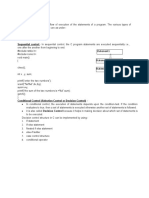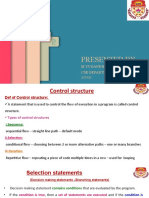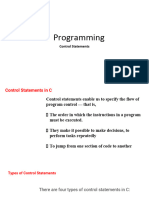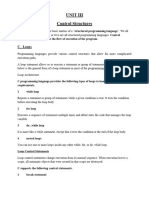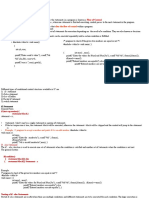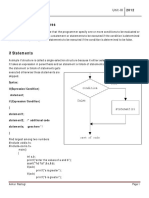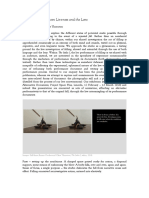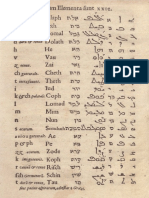0% found this document useful (0 votes)
28 views20 pagesModule II Answers
The document provides an overview of conditional statements, loops, and control flow in C programming, detailing various types such as simple if, if-else, else-if ladder, and switch-case statements. It also explains iterative statements including while, do-while, and for loops, along with examples and algorithms for specific tasks like summing digits and evaluating series. Additionally, it differentiates between break and continue statements and includes programs for pattern printing and character classification.
Uploaded by
runtst2Copyright
© © All Rights Reserved
We take content rights seriously. If you suspect this is your content, claim it here.
Available Formats
Download as DOCX, PDF, TXT or read online on Scribd
0% found this document useful (0 votes)
28 views20 pagesModule II Answers
The document provides an overview of conditional statements, loops, and control flow in C programming, detailing various types such as simple if, if-else, else-if ladder, and switch-case statements. It also explains iterative statements including while, do-while, and for loops, along with examples and algorithms for specific tasks like summing digits and evaluating series. Additionally, it differentiates between break and continue statements and includes programs for pattern printing and character classification.
Uploaded by
runtst2Copyright
© © All Rights Reserved
We take content rights seriously. If you suspect this is your content, claim it here.
Available Formats
Download as DOCX, PDF, TXT or read online on Scribd
/ 20



